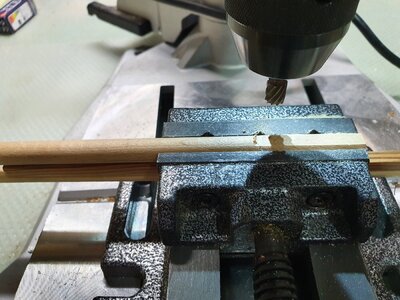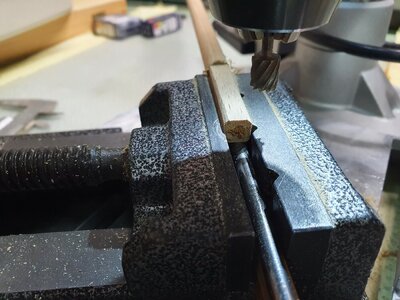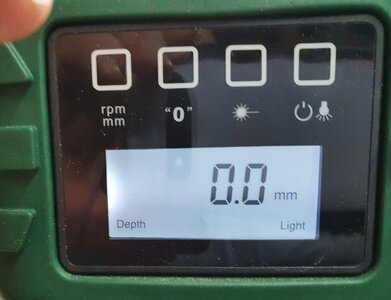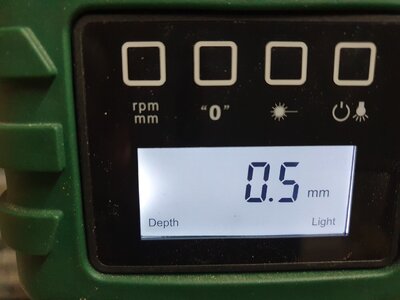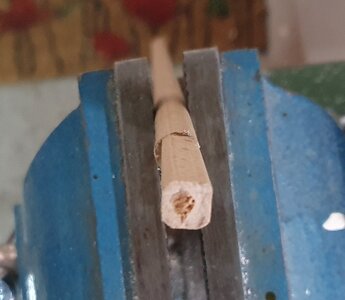This is how I set it up taking all safety precautions, such as wearing safety glasses. The trick is not to move the vice too quickly! The following task is done before the mast is tapered.
I found that a maximum of 0,5 mm material from the mast per pass was ideal. That means for an 8 mm square from a 10 mm dia mast I removed 1 mm per side equating to two passes of the mill per side of the square.
The chuck speed was 2000 RPM but the speed can be higher. The cutter sharp. I put some packing pieces under the mast in the vice to ensure parallelity. Attention and care are required when approaching the marked line. The mill was moved onto the diameter of the mast and the digital depth gauge on the display set to zero. The vice moved away and the chuck lowered until a depth of 0,5 mm or less, depending on how much material one wants to remove, and the stop locked into position ensuring the mill did not go any lower. I moved the vice slowly in a backwards and forwards motion carefully until the end of the square was reached. I removed the mast and rotated it 90° and reclamped in the vice. This sequence repeated until the square was completed.
Just needs deburring and the job is done. This a practice piece and not the actual mast.
My next step in improving the set-up will be to fix a guide to the table to act as a stop for the vice and to add a clamp to the pillar to fix the drill head in position so that I have both hands free to hold and move the vice. At the moment one hand holds down the mill and the other guides the vice. I will post more photos of this set-up when these next steps have been accomplished.
After that the tricky bit will be to manufacture the smaller square at the front of the existing square. I will probably cut the smaller square by hand leaving a small amount all round for removal in the drill. To ensure the mill doesn't catch, I will grind down the outer diameter of the mill and leave only the tips to cut the material.
It's not ideal by a long shot but suits my needs not having a proper milling machine. The alternative is to do all the work by hand.
I would gladly accept any suggestions to improve the set-up, though.
View attachment 205012View attachment 205013View attachment 205014View attachment 205016
View attachment 205015





